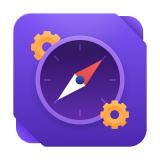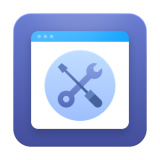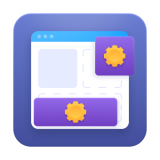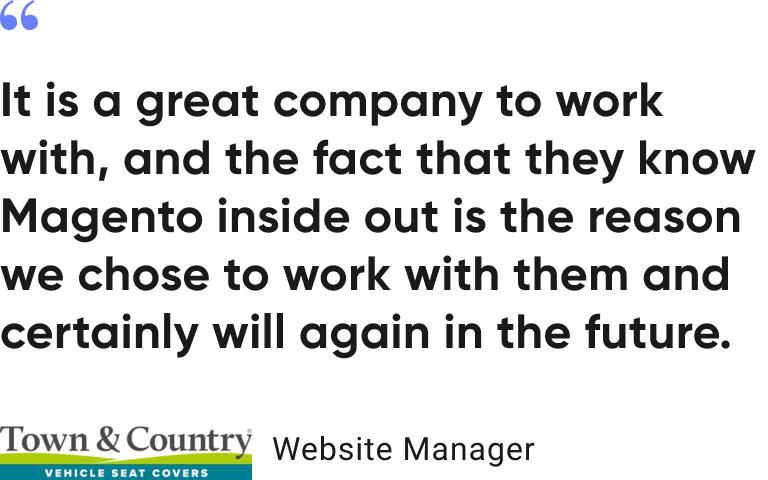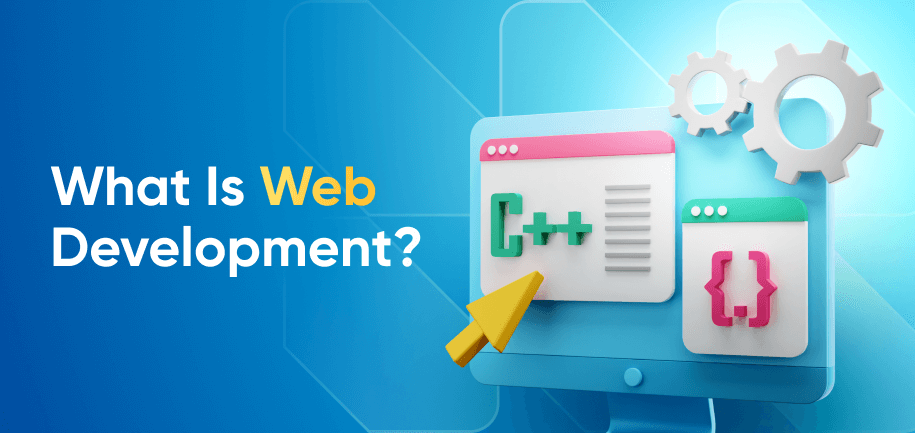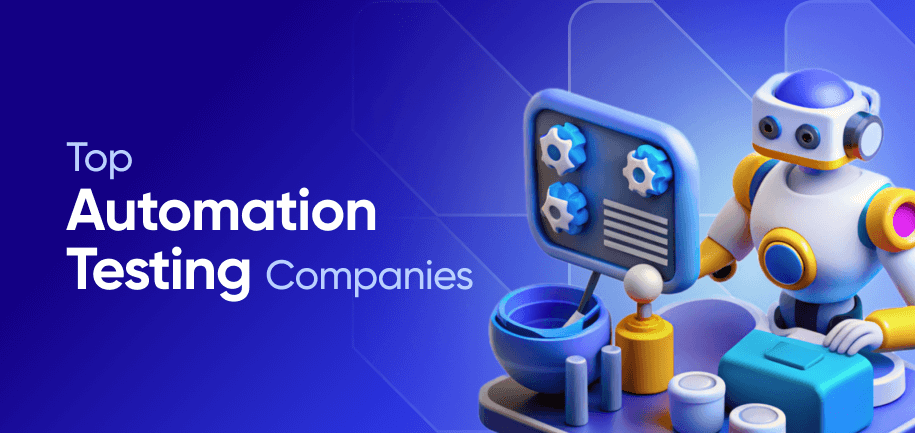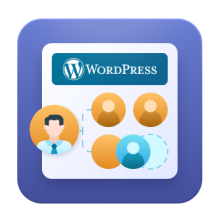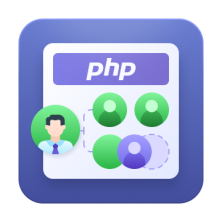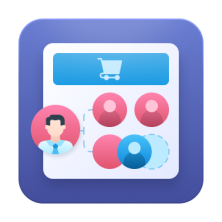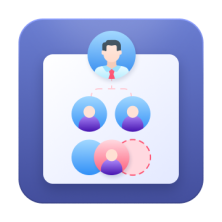Web development is a booming industry, with millions of websites online and new ones being created daily. According to Statista, over 1.8 billion websites exist on the internet. However, many businesses still struggle to create engaging and functional websites that meet user expectations and stand out in a competitive market.
This article addresses these challenges through a comprehensive guide to understanding web development, its processes, key technologies, and current trends.
What Is Website Development?
The website development meaning refers to the process of designing, building, and maintaining websites or web applications that users access through a web browser. It involves creating visually appealing, functional, and user-friendly online experiences. Custom web development services cover everything from crafting simple static pages to engineering complex, interactive platforms and software.
Key aspects of web development are:
Building Websites – Involves creating both the design and functionality of web pages.
User Experience – Ensures seamless interaction and navigation for users.
Front-End and Back-End Coding – Combines both visible elements and behind-the-scenes functionality.
Static and Dynamic Pages – Includes creating simple pages and interactive web applications.
Ongoing Maintenance – Involves updating and fixing websites to ensure optimal performance.
Web Development vs. Web Design
Web development and web design are integral but distinct components of website creation. The following table outlines their key differences and collaborative dynamics:
| Aspect | Web Design | Web Development |
|---|---|---|
| Core Focus | Visual creativity, layout, and aesthetics | Technical implementation through coding and programming |
| Main Areas | User experience (UX) and interface design | Front-end and back-end development |
| Key Responsibilities | Create design prototypes and mockups | Translate designs into functional websites |
| Tools Used | Design software (e.g., Adobe XD, Sketch) | Programming languages and frameworks |
| Collaboration | Collaborates with developers to ensure design feasibility | Works with designers to implement functionality |
| Unified Goal | Craft intuitive and engaging user interfaces | Build highly functional and secure websites |
While development focuses on technical coding for functionality, design emphasizes aesthetics and user experience. Both use distinct tools but collaborate closely to create websites that are both functional and visually engaging, effectively meeting user and business needs.
Read More: Best Website Builders
Types of Web Development
Web development consists of several specialized fields, each focusing on different aspects of creating a successful website:
Front-End Development
Front-end development involves working on the part of the website that users interact with directly. It includes everything you see when you visit a website, such as text, images, and menus. Front-end developers use languages like HTML, CSS, and JavaScript to create visually appealing and functional interfaces.
Back-End Development
Back-end development focuses on the server side of a website. It involves managing the database and server, ensuring that everything on the front-end runs smoothly. Back-end developers work with programming languages such as Python, Ruby, and PHP to build the logic and functionality driving a website.
Full-Stack Development
Full-stack development encompasses both front-end and back-end development. Full-stack developers have expertise in both areas and can manage a website's entire development process from start to finish.
Read More: How to Build an E-commerce Website
Technologies Used in Web Development
In website creation, various technologies ensure functionality, efficiency, and accessibility. Here's a breakdown of key technologies used in web development:
Programming Languages – HTML structures web pages, CSS handles styling, and JavaScript adds interactivity. Advanced tools like TypeScript and SASS boost functionality and efficiency.
Frameworks and Libraries – Frameworks and libraries provide reusable code for faster development. Front-end tools like React and Angular build dynamic interfaces, while back-end options like Laravel support robust server-side logic.
Content Management Systems (CMS) – CMS platforms like WordPress, Magento, and Shopify let users manage content without coding. They support plugins and themes for easy customization and scalability.
Web Hosting and Servers – Hosting services store website data and ensure it's accessible online. Options like shared, VPS, and dedicated hosting vary in performance and control. Good hosting improves speed, security, and uptime.
| Category | Purpose | Popular Examples |
|---|---|---|
| Programming Languages | Structure, design, and functionality | HTML, CSS, JavaScript, TypeScript, SASS |
| Frameworks & Libraries | Simplify and speed up coding | React, Angular, Vue.js, Laravel, Django |
| Content Management Systems | Edit and publish website content easily | WordPress, Magento, Shopify, Joomla |
| Web Hosting & Servers | Make websites accessible on the internet | Bluehost, SiteGround, AWS, DigitalOcean |
5 Steps of the Web Development Process
Creating a successful website involves several stages, each playing a vital role in delivering a functional and engaging online presence. Here's an in-depth look at the web development process:
Planning and Research
The initial stage requires understanding project requirements, target audience, and business goals. It includes identifying key features, analyzing competitors to understand industry standards, and developing a project timeline and budget for efficient resource management.
Design and Wireframing
Designers create wireframes and mockups to visualize the overall layout and functionality. This phase includes sketching wireframes to outline page structures, creating mockups to represent the final design, and establishing a consistent visual style with colors, fonts, and imagery, often enhanced with an AI-powered image editor to refine visuals and maintain design consistency quickly.
Development and Coding
Developers start coding the website based on the approved designs, using selected programming languages and frameworks. This involves building the front-end with HTML, CSS, and JavaScript, developing the back-end with server-side languages to manage data operations, and integrating third-party APIs and plugins for extended functionality.
Testing and Debugging
After development, thorough testing ensures the site operates correctly. Functionality tests verify all features work as intended, compatibility tests are performed across different browsers and devices, and debugging helps identify and fix errors or performance issues.
Deployment and Maintenance
Once testing is complete, the website is deployed to a live server. This involves configuring web hosting and domain settings for accessibility, setting up analytics tools to monitor performance and user behavior, and regularly updating content and software to maintain security and functionality.
Read More: How to Build a Magento Website
Key Roles in Web Development
In the web development ecosystem, various roles collaborate closely to ensure the successful creation and maintenance of a website. Here's a detailed look at the key roles involved:
Web Developer – Web developers handle the code and technical aspects of websites. They use programming languages to create functional, efficient solutions, managing both front-end and back-end tasks, and addressing technical issues.
Web Designer – Web designers create the visual elements of a site, ensuring it aligns with the brand's vision. They focus on aesthetics, color schemes, and responsive design for an engaging user experience.
UX/UI Designer – UX/UI designers enhance user experience through research and prototyping. They focus on usability, ensuring intuitive navigation and optimizing user satisfaction and engagement with the site.
Project Manager or Product Owner – Project managers guide the development process, ensuring projects stay on time and within budget. They coordinate between teams, aligning goals and facilitating communication for successful project delivery.
Web Development: Career Paths and Skills Needed
Pursuing a career in web development requires a blend of technical expertise and interpersonal abilities. Here's a quick overview of the essential skills and learning paths needed:
Technical Skills
At the core of web development lies a strong command of HTML, CSS, and JavaScript, the building blocks of the web. As developers grow, they typically adopt JavaScript frameworks like React, Angular, or Vue.js to create responsive, user-friendly interfaces. On the back end, tools such as Node.js, Express, and Django allow developers to build powerful server-side applications.
Version control is another web development basic, with Git and platforms like GitHub or Bitbucket being indispensable for tracking changes and collaborating with others. A working knowledge of databases – relational, like PostgreSQL and MySQL, or NoSQL like MongoDB – is needed for effective data management.
Understanding APIs, especially REST and GraphQL, allows developers to integrate third-party services and connect frontend and backend systems. Developers also benefit from using npm or Yarn to manage project dependencies and tools like Webpack or Vite to streamline development and deployment workflows.
For those aiming at full-stack proficiency, exploring cloud platforms like AWS, Firebase, or Netlify for hosting and deployment is becoming increasingly important.
Read More: Best 20+ Custom Development Companies
Soft Skills
Soft skills are just as important as technical abilities. Effective communication ensures smooth collaboration with team members and clients, and non-technical stakeholders. Tools like Slack, Microsoft Teams, and Zoom are commonly used for team collaboration and daily stand-ups, especially in agile environments.
Problem-solving is another vital trait, as developers must approach challenges logically and creatively. Platforms like Stack Overflow and GitHub Discussions often support this learning and troubleshooting process.
Time management and adaptability are also important, particularly when working with deadlines or learning new tools. Familiarity with project management tools like Jira, Trello, or Asana helps developers organize tasks, track progress, and stay aligned with team goals.
Teamwork plays a central role in larger development teams. Understanding how to participate in code reviews using tools like GitHub Pull Requests or GitLab Merge Requests encourages quality, collaboration, and continuous improvement.
Finally, creativity remains a differentiator. It helps developers find elegant solutions, build intuitive interfaces, and stay ahead.
Trends in Modern Web Development
Web development is constantly evolving, with emerging trends shaping the way websites are built and maintained. Here are some of the key trends in modern web development:
Mobile-First and Responsive Design – Design with mobile access as a priority is important due to high mobile usage. This approach ensures websites function smoothly across all devices, providing a consistent user experience regardless of screen size.
AI and Automation in Web Development – Artificial intelligence enhances personalization and user engagement on websites. Automation streamlines processes, enabling intelligent features such as chatbots and virtual assistants, which improve efficiency and user interaction.
Voice Search Optimization – With the rise of voice-activated devices, optimizing websites for voice search is becoming crucial. This involves structuring content to accommodate voice queries and enhancing the accessibility of information.
Cybersecurity Enhancements – As cyber threats increase, prioritizing security in web development is vital. Implementing robust protocols and encryption ensures user data protection and builds trust with visitors.
Serverless Architecture – The serverless approach allows developers to build and run applications without managing the underlying infrastructure. This leads to reduced costs and enhanced scalability, as resources are allocated dynamically.
Getting Started with Web Development
Dreaming of a sleek business website, a powerful web app, or a niche online store? Since you're reading this, we're sure you know that learning the basics of web development is your first step toward bringing that idea to life.
Now that you know what goes into building modern websites - from design and coding to deployment and maintenance, you’re better equipped to take action.
If you're passionate about tech, consider learning web development from scratch. With tools like Visual Studio Code, GitHub, and learning platforms such as freeCodeCamp or Udemy, you get a good intro to web development and can start building right away.
Prefer to focus on your business idea? Assemble a skilled team or collaborate with professionals. Agencies like Amasty offer expert web development services tailored to your goals – whether you need a custom-built Magento solution, a full-stack application, or help optimizing an existing site.
Whatever path you choose, the web is yours to shape.
Frequently asked questions
Web development is the process of creating websites or web applications accessible over the internet or a private network. This involves building and maintaining digital spaces that users interact with. In terms of the web development definition, it includes designing layouts and writing code.
A web developer builds and maintains websites, focusing on coding, design, and functionality for a seamless user experience. They ensure the technical side of the website development aligns with client needs and user expectations.
